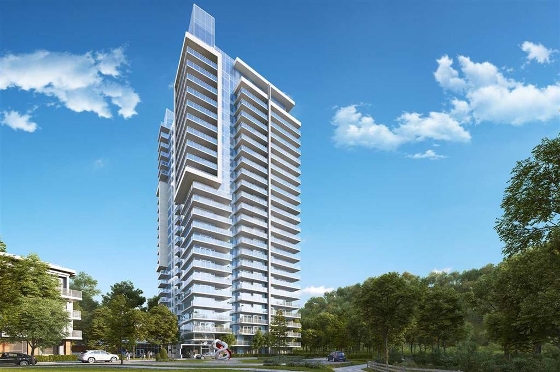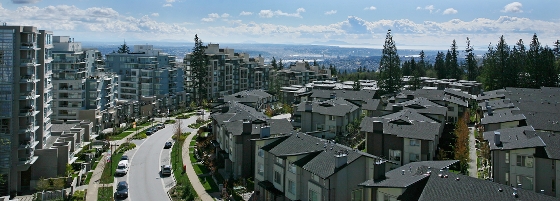Statistics released today by The Canadian Real Estate Association (CREA), show national home sales continued to climb in December 2017.
Highlights:
- National home sales rose 4.5% from November to December.
- Actual (not seasonally adjusted) activity was up 4.1% year-over-year (y-o-y).
- The number of newly listed homes climbed 3.3% from November to December.
- The MLS® Home Price Index (HPI) in December was up 9.1% y-o-y.
- The national average sale price advanced by 5.7% y-o-y.
Home sales via Canadian MLS® Systems posted their fifth consecutive monthly increase in December 2017, fully recovering from the slump last summer.
Activity in December was up in close to 60% of all local markets, led by the Greater Toronto Area (GTA), Edmonton, Calgary, the Fraser Valley, Vancouver Island, Hamilton-Burlington and Winnipeg.
Actual (not seasonally adjusted) activity was up 4.1% from December 2016. While activity remained below year-ago levels in the GTA, the decline there was more than offset by some sizeable y-o-y gains in the Lower Mainland of British Columbia, Vancouver Island, Calgary, Edmonton, Ottawa and Montreal.
“Monthly momentum for national home sales activity gained strength late last year and further expected economic and job growth will buoy sales activity this year despite slightly higher expected interest rates,” said CREA President Andrew Peck. “Even so, momentum for home sales differs depending on location and type,” he added. “A professional REALTOR® is your best source for information and guidance in negotiations to purchase or sell a home during these changing times,” said Peck.
“National home sales in December were likely boosted by seasonal adjustment factors and a potential pull-forward of demand before new mortgage regulations came into effect this year,” said Gregory Klump, CREA’s Chief Economist. “It will be interesting to see if monthly sales activity continues to rise despite tighter mortgage regulations that took effect on January 1st.”
The number of newly listed homes rose 3.3% in December. As in November, the national increase was overwhelmingly due to rising new supply in the GTA.
New listings and sales have both trended higher since August. As a result, the sales-to-new listings ratio has remained in the mid-to-high 50% range since then.
A national sales-to-new listings ratio of between 40% and 60% is generally consistent with a balanced national housing market, with readings below and above this range indicating buyers’ and sellers’ markets respectively. That said, the balanced range can vary among local markets.
Considering the degree and duration that the current market balance is above or below its long-term average is a more sophisticated way of gauging whether local housing market conditions favour buyers or sellers.
Market balance measures that are within one standard deviation of the long-term average are generally consistent with balanced market conditions.
Based on a comparison of the sales-to-new listings ratio with its long-term average, more than two-thirds of all local markets were in balanced market territory in December 2017.
The number of months of inventory is another important measure of the balance between housing supply and demand. It represents how long it would take to liquidate current inventories at the current rate of sales activity.
There were 4.5 months of inventory on a national basis at the end of December 2017. The measure has been moving steadily lower in tandem with the monthly rise in sales that began last summer.
The number of months of inventory in the Greater Golden Horseshoe region (2.1 months) was up sharply from the all-time low reached in March 2017 (0.9 months). Even so, the December reading stood a full month below the region’s long-term average (3.1 months) and reached a seven-month low.

The Aggregate Composite MLS® HPI rose by 9.1% y-o-y in December 2017. This was the 8th consecutive deceleration in y-o-y gains, continuing a trend that began in the spring. It was also the smallest y-o-y increase since February 2016.
The deceleration in y-o-y price gains largely reflects trends among Greater Golden Horseshoe housing markets tracked by the index, particularly for single-family homes. On an aggregate basis, only single-family price increases slowed on a y-o-y basis. By comparison, y-o-y price gains picked up for townhouse/row and apartment units.
Apartment units again posted the largest y-o-y price gains in December (+20.5%), followed by townhouse/row units (+13%), one-storey single family homes (+5.5%), and two-storey single family homes (+4.5%).
Benchmark home prices were up from year-ago levels in 9 of the 13 markets tracked by the MLS® HPI, with Calgary and Oakville-Milton price comparisons tipping slightly into negative territory on a y-o-y basis.
After having dipped in the second half of last year, composite benchmark home prices in the Lower Mainland of British Columbia have recovered and now stand at new highs (Greater Vancouver: +15.9% y-o-y; Fraser Valley: +20.9% y-o-y).
Benchmark home prices rose by about 14% on a y-o-y basis in Victoria and by about 19% elsewhere on Vancouver Island in December. These y-o-y gains were similar to those recorded in October and November.
Price gains have slowed considerably on a y-o-y basis in the GTA, Guelph and Oakville-Milton; however, home prices in the former 2 markets remain above year-ago levels (Greater Toronto: +7.2% y o-y; Guelph: +13.1% y-o-y; Oakville-Milton: -0.8% y-o-y).
Calgary benchmark home prices were down slightly in December (-0.4% y-o-y), as were home prices in Regina and Saskatoon (-4% y-o-y and -3.7% y-o-y, respectively).
Benchmark home prices rose by 6.6% y-o-y in Ottawa (led by a 7.5% increase in two-storey single family home prices), by 5.4% in Greater Montreal (led by a 6.3% increase in in two-storey single family home prices) and by 6.3% in Greater Moncton (led by an 8.3% increase in one-storey single family home prices). (Table 1)
The MLS® Home Price Index (MLS® HPI) provides the best way of gauging price trends because average price trends are prone to being strongly distorted by changes in the mix of sales activity from one month to the next.
The actual (not seasonally adjusted) national average price for homes sold in December 2017 was just over $496,500, up 5.7% from one year earlier. The national average price is heavily skewed by sales in Greater Vancouver and the GTA, two of Canada’s most active and expensive markets. Excluding these two markets from calculations trims almost $116,000 from the national average price to just under $381,000.
PLEASE NOTE: The information contained in this news release combines both major market and national sales information from MLS® Systems from the previous month.
CREA cautions that average price information can be useful in establishing trends over time, but does not indicate actual prices in centres comprised of widely divergent neighbourhoods or account for price differential between geographic areas. Statistical information contained in this report includes all housing types.
MLS® Systems are co-operative marketing systems used only by Canada’s real estate Boards to ensure maximum exposure of properties listed for sale.
The Canadian Real Estate Association (CREA) is one of Canada’s largest single-industry trade associations, representing more than 120,000 REALTORS® working through some 90 real estate Boards and Associations.







%20-%20Jan%2018-560-wide.jpg)



/arc-anglerfish-tgam-prod-tgam.s3.amazonaws.com/public/OQCY7Q4JBVEUBPABPD3CIMJQAA.JPG)